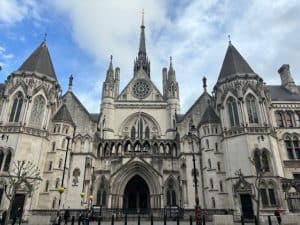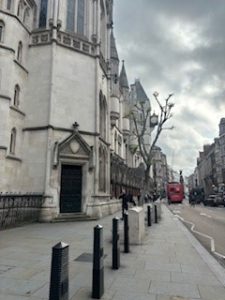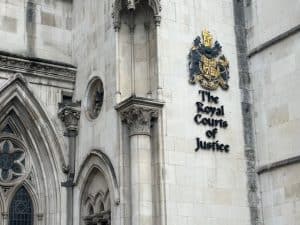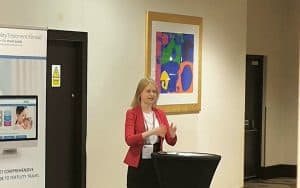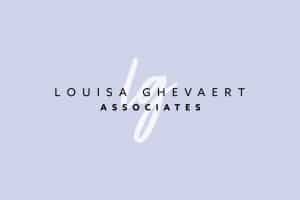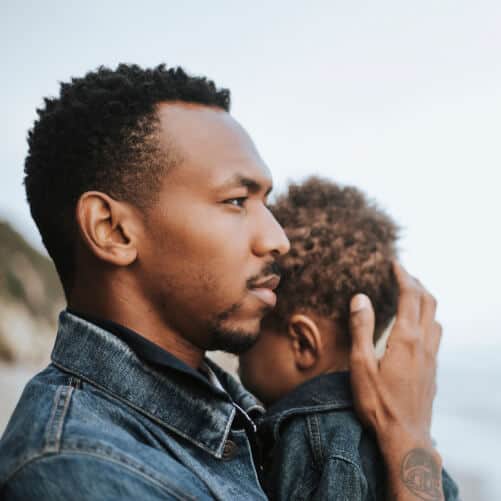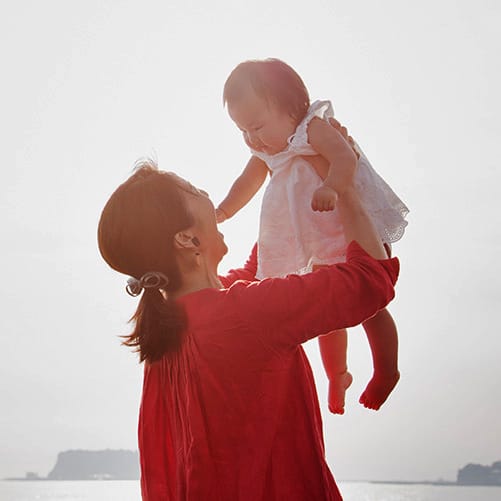25 July 2025
The 2024 cases P v Q and Others [2024] EWFC 85 and of P v Q and F (Child: Legal Parentage) [2024] EWCA Civ 878 highlight a series of complex legal issues related to parenthood, parental responsibility and birth registration for lesbian families conceiving with donor sperm. It involved an intricate legal dispute about the child’s legal parentage and the circumstances of a privately arranged conception; specifically whether it took place by artificial insemination or natural conception, that reached the Court of Appeal. This case brings into close focus the challenges associated with donor conception without use of a fertility clinic and ensuing difficulties navigating legal proceedings to achieve a Declaration of Parentage in light of entangled disputes after a relationship breakdown.
Background
This case deals with a married lesbian couple (P and Q) who had a daughter (X) through donor conception in 2017. Initially, X’s birth certificate was registered listing P as the mother, as she had carried the pregnancy and used her own eggs, and Q as the second legal parent. As a result, Q also obtained parental responsibility for X even though she was not X’s biological parent. However, following the couples’ divorce in 2021, they fell into dispute over the child’s legal parentage, care and their sperm donor’s (F) involvement in her life. As a result, P proceeded to issue an application for a Declaration of Parentage in the English Family Court that F was X’s legal father and that her former wife Q was not X’s second legal parent. Whilst there was no dispute that F was X’s biological father, Q vehemently opposed P’s application as the implications of this were profound: if granted Q had no right to be registered as second legal parent on X’s birth certificate and she had no parental responsibility for X. DNA testing had confirmed F was X’s biological father.
In summary, P and Q’s relationship began in 2011, and they were married by August 2016. In 2015/2016 they began to research methods to achieve parentage as a lesbian couple. They decided to undergo donor conception, with P opting to carry the pregnancy. Their first attempt at artificial insemination used sperm imported from a clinic in Denmark, however, this was unsuccessful. So, due to cost and difficulty conceiving, the couple chose to use a more informal method of conception by finding a known donor and attempting to conceive at home. They found F through placing an internet advert, and after meeting with him in a pub, both agreed to use him as the donor.
The first two rounds of artificial insemination using F’s sperm were unsuccessful, even with tracking ovulation windows. Following these struggles which left P feeling unhappy and desperate and strained her relationship with Q, P sought to get pregnant by natural conception (sex) with F to increase chances of conception, without informing her wife. She did so by secretly meeting with him at her parents’ house whilst they were away, and they had sexual intercourse a total of three times. P and Q’s third round of artificial insemination took place a day or two after P and F had had sex, and roughly 3 weeks later P found out that she was pregnant.
X was born in late 2017 and her birth registration listed P as her mother, and Q as her second legal parent. However, the couple subsequently divorced in 2021 and P began communicating with F and F saw X at her birthday parties in 2021, 2022 and 2023. In April 2021, Q therefore applied for a child arrangements order to secure involvement in X’s care and upbringing. Contested legal proceedings ensued, and within these a dispute arose about the donor’s involvement in X’s life in late 2022. This triggered a further dispute over the circumstances of X’s conception. At this point, P informed Q of her secret sexual intercourse with F and asserted her belief that X was conceived through natural conception, as opposed to artificial insemination. P then proceeded to issue an application for a Declaration of Parentage in September 2023 that Q was not X’s second parent, and instead that F was her legal father.
This case was initially heard in the High Court by Mrs Justice Gwynneth Knowles at first instance, due to the difficulty in distinguishing the method of conception that had occurred. The court heard oral evidence from P, Q and F about the circumstances of X’s conception. Knowles J went on to determine:
“In this case, I have found, on the balance of probabilities, that Q did not consent to anything other than assisted reproduction but the method of X’s conception was unclear because P and F had natural intercourse during the relevant conception window [meaning Q could not show X was conceived through artificial reproduction]. In those circumstances, the presumption of Q’s legal parenthood is rebutted and the common law position applies”.
Accordingly, P’s application for a Declaration of Parentage was granted, that Q was not X’s second legal parent, and that F was her legal father. Knowles J went on to direct that notice be given to the Registrar General for consideration of whether X’s birth should be re-registered. This case was appealed by Q to the Court of Appeal, where the appeal was subsequently dismissed by Lord Justice Peter Jackson.
Images: The Royal Courts of Justice, Strand, London
Legal Parentage
When considering the legal issues governing parentage following the disputed circumstances of conception in this case, both the High Court and Court of Appeal ruled that the appropriate starting point is the common law position (i.e. that the child’s legal parents are the gestational mother and the biological father) unless compliance with statute regulating parentage as a result of assisted reproduction was proved. Under common law, this led to a presumption that F was X’s legal and biological Father, and so should be recorded as such on her birth certificate. As Lord Justice Peter Jackson went on to state, this position should only be dismissed if there are statutory reasons for doing so.
It was then discussed whether Q fell under s.42 of the Human Fertilisation and Embryology Act 2008 (HFEA 2008) to allow this presumption to be departed from. The HFEA 2008 allows parentage to be achieved by couples undergoing assisted reproduction, with s.42 specifically covering lesbian marriages or civil partnerships. It states that at the time a woman undergoes artificial insemination, if she is in a civil partnership or marriage with another woman, the other party is to be treated as parent of the child, unless it is shown that she did not consent. This was relevant because P and Q had registered X’s birth on this basis, recognising Q as her second legal parent.
However, s.42 can only apply if artificial insemination was in fact undertaken. Without this, the other woman in the marriage cannot be recognised as a legal parent, and the common law position applies instead. This led to a legal dispute in the case about whether on the balance of probabilities, artificial insemination took place to enable the conditions of s.42 of the HFEA 2008 to be met. As there was uncertainty as to how X was conceived, it was determined on the evidence that there was a significant possibility that artificial insemination did not take place. As a result, the court held on balance that Q did not meet the requirements of s.42 HFEA 2008, and so she lost her avenue to legal parentage.
Another challenging feature of this case arose from Q’s lack of consent to P decision to have sex with their donor. This further excluded Q from the provisions of s.42 HFEA 2008 as she consented to the use of F’s sperm for artificial insemination, but not for natural conception. Thus, the presumption of Q’s legal parenthood was rebutted, and instead the court fell back onto the common law position.
Once it was established that Q could not obtain legal parentage, P’s application for a Declaration of Parentage for F was considered. This occurred under s.55A of the Family Law Act 1986. It was ruled that there were no reasons for the court to dismiss P’s application. It was not considered contrary to public policy, and it was determined to be in X’s best interest for F to be recognised as her biological and legal father. In doing so, Mrs Justice Knowles highlighted the importance for a child to know their biological heritage. As a result, P’s application for a Declaration of Parentage that F was X’s legal and biological parent was granted.
Following the first instance decision, the case was then appealed to the Court of Appeal by Q on the grounds that Mrs Justice Knowles misconstrued where the burden of proof lay. She had ruled that the burden of proof lay with P to show that X was conceived through natural conception, and that Q did not consent, and overall, she was found to have done so. The appeal was subsequently dismissed by Lord Justice Peter Jackson as he ruled that the first instance decision was correct in placing the burden of proof on P. Thus, P’s application for a Declaration of Parentage was granted.
Specialist Fertility and Family Law
Through the complexity of both the entangled relationships between P, Q and F, amongst the difficulty of informal means of donor conception, this case created complex legal issues. These related to the wider circumstances of assisted reproduction and donor conception, family building and same-sex parenting, and the legal provisions in place governing these pathways to parenthood. As Mrs Justice Gyneth Knowles summarised in her first instance decision:
“This case is a cautionary tale about the consequences for a child and for a same-sex couple of both deceit as to how that child came to be conceived and the unreliability of informal arrangements for artificial insemination. The fallout from this couple’s separation has been devastating for each of them and for their named sperm donor. In due course, the child concerned will need an age-appropriate explanation of what happened when she was conceived and why it is that she now has a different birth-certificate”.
Obtaining specialist fertility and family law advice from the outset of family building arrangements enables effective approaches to assisted reproduction, donor conception, legal parentage, birth registration and parental responsibility. It identifies and manages a range of legal and practical issues and inherent risks to help maximise successful outcomes. In doing so, they can address:
- Complex personal and family situations.
- Conception by private sperm donation.
- Regulated sperm donation at a licensed fertility clinic.
- Assisted conception with a known sperm donor, anonymous/identity-release donor or co-parent (e.g. legal parentage, parental rights, birth registration, financial responsibility, risks in practice and dispute mitigation etc).
- Donor conception issues/disputes (e.g. concerning formal DNA/paternity testing, direct-to-consumer genetic testing, fertility fraud, biological and legal parentage and birth certificates).
- Care and upbringing of children following a dispute with a donor, co-parent, an ex-partner or parent (e.g. contact, residence, financial arrangements, parental responsibility, specific issue or prohibited steps).
- Intra-family egg or sperm donation.
- Donor conception and issues arising from impaired fertility/infertility, cancer diagnosis/illness, unsuccessful conception attempts, gender transition, change in personal circumstances, age and later-life parenthood.
- Posthumous conception with the eggs, sperm and embryos of a deceased loved one in fertility treatment with donor conception/surrogacy (e.g. due to illness or accident).
- Legal and wider aspects of international surrogacy or a UK surrogacy arrangement and donor conception.
- Issues with importing frozen gametes/embryos into the UK for fertility treatment and surrogacy (e.g. due to anonymous and commercially obtained donor gametes/embryos which engage UK public policy restrictions).
- Issues exporting donor gametes/embryos abroad for fertility treatment and surrogacy (e.g. consent and storage term difficulties).
- Expert witness fertility, surrogacy and donor conception law services.
Do you need a fertility or family lawyer? Do you need help with family building, donor conception, a paternity dispute, obtaining and exercising parental responsibility, bringing or defending a child arrangements order? Do you need expert assistance with an application for a Declaration of Parentage to confirm legal or biological parentage and resolve issues with birth registration? If you would like to discuss your situation or you would like specialist legal advice contact Louisa Ghevaert by email louisa@louisaghevaertassociates.co.uk or by telephone+44 (0)20 7965 8399.
Images: Louisa Ghevaert, CEO & Founder Louisa Ghevaert Associates.
To find out more about Louisa Ghevaert click here.

